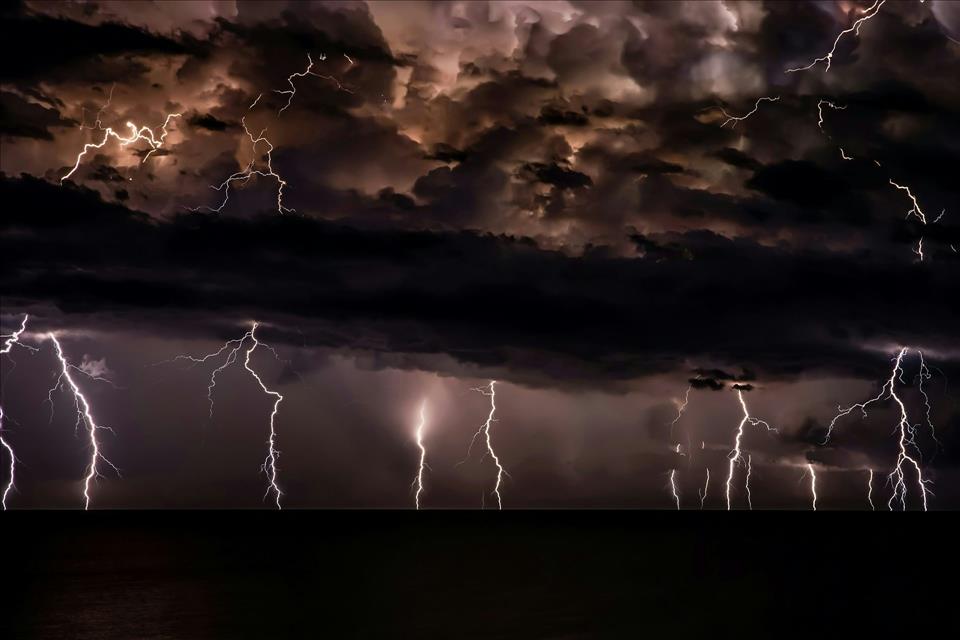Our Understanding Of Lightning Has Been Driven By Fear And Shaped By Curiosity
Nowhere is this more true than in the study of electricity in the wild; namely, lightning. Primitive humans must have been terrified by lightning, so much so that it is built into many religions . Lightning is almost always associated with the most powerful gods.
In Greco-Roman mythology, Zeus is armed with lightning bolts. In Norse mythology, Thor is the god of thunder and lightning. The Yoruba god Shango is associated with thunder, lightning and justice.
Lighting appears in popular culture as well, and Shakespeare - for once - gets it wrong in Cymbeline :
This refers to the old (and not unreasonable) idea that thunder was caused by immense stones falling from the sky .
The French expression“coupe de foudre” - lightning strike - roughly translates as“love at first sight.” In English, we know that“lightning never strikes twice .” This is untrue: unfortunately, lightning hits the CN Tower in Toronto about 75 times annually .
Lightning hits the CN Tower behind the deserted exhibitions grounds in Toronto in August 2011. THE CANADIAN PRESS/Frank Gunn A billion volts
Our modern understanding of lightning starts with Benjamin Franklin, who proposed flying a kite in a thunderstorm with a metal key attached to the end of the wire. He hypothesized that the current would travel down the line, but he probably had too much sense to actually perform the experiment. French physicist Thomas-François Dalibard conducted the lightning rod experiment in 1752. The same experiment killed German physicist Georg Wilhelm Richmann in 1753.
What do we know about lightning? The basic process that creates thunderclouds is that positive charge, in the form of ionized atoms, is carried to the top by the up-drafts. The top of the cloud is positively charged, the bottom of cloud is negative and a positive charge is induced on the ground . The voltage between the bottom of the cloud and the ground can range between 100 million to one billion volts .
Even though dry air is normally an insulator, it will break down and becomes a conductor if the electric field reaches three million volts per metre. The actual process that goes on is complex: the electric field builds up beyond the maximum, producing ionized, conducting paths developing downwards from the cloud and upwards from the ground.
These branch and bend at random, depending on the local density of the air. When they meet, they form a conducting pathway that discharges the charge imbalance in a few milliseconds. The current can be huge, up to a million amps .
Lightning is not unique to thunderstorms on Earth. Volcanoes provide rapid up-drafts with a lot of friction between the ash particles . The Galileo space-probe has captured images of lightning on the night-side of Jupiter.
Global News looks at the science of volcanic lightning. Dangerous electricity
Churches were notorious for burning down after being hit by lightning. This is hardly surprising: in most old European cites the church would have been the tallest building and topped by a metallic cross, providing a perfect path for the current.
One dramatic example was a lightning strike on a church in Brescia, Italy. The church was, for some reason, being used to store gunpowder and the resulting explosion resulted in 3,000 deaths .
The human body can be quite a good conductor, so a current produced by lightning prefers to flow through a person. Two to three people are killed by lightning each year in Canada.
People killed by lightning are often found naked: the massive current can cause any liquids to be vaporized and produce a sufficiently strong explosion to tear the clothes from the body.
If you're ever out on a lake in a canoe and a thunderstorm hits, stay where you are and lie down, or get to shore as fast as possible. The induced charge is on the surface of the lake, so when the bolt hits, there will be a very large current on the surface of the water but you will be protected in the canoe.
Protective measuresIn the 1750s, Franklin invented the lightning rod as protection from lightning, a sharply pointed metal rod attached to the top of a building .
The lightning rod would attract lightning by having an electric field that is very strong around the sharp point. This ionizes the air and allows current to flow so that the strike hits the conductor rather than the structure.
These days, many variations on lightning conductors exist, from rods to spheres, reducing the amount of damage caused by lightning strikes.

Legal Disclaimer:
MENAFN provides the
information “as is” without warranty of any kind. We do not accept
any responsibility or liability for the accuracy, content, images,
videos, licenses, completeness, legality, or reliability of the information
contained in this article. If you have any complaints or copyright
issues related to this article, kindly contact the provider above.
Market Research

- Latin America Mobile Payment Market To Hit USD 1,688.0 Billion By 2033
- Nutraceuticals Market Size Projected To Witness Strong Growth During 2025-2033
- BTCC Summer Festival 2025 Unites Japan's Web3 Community
- Meme Coin Little Pepe Raises Above $24M In Presale With Over 39,000 Holders
- Excellion Finance Launches MAX Yield: A Multi-Chain, Actively Managed Defi Strategy
- What Is The Growth Rate Of The Europe Baby Food And Infant Formula Market In 2025?




















Comments
No comment